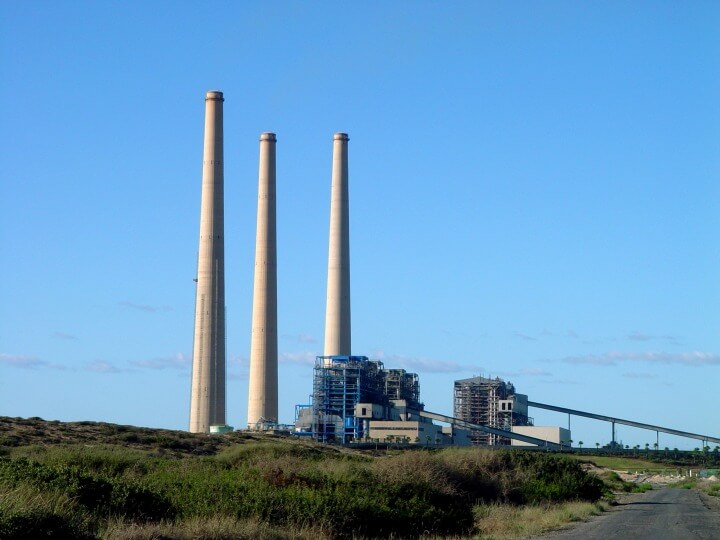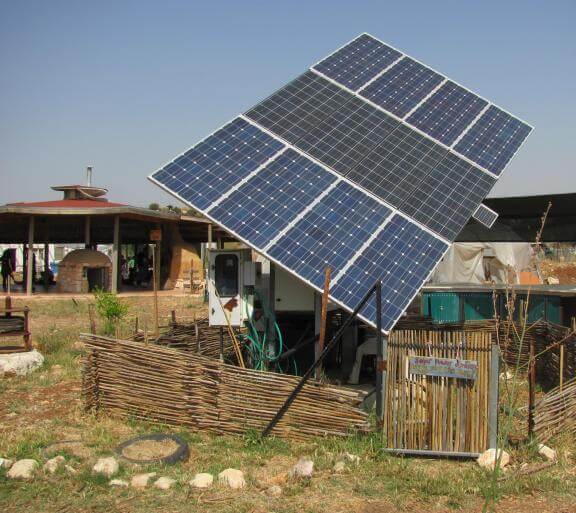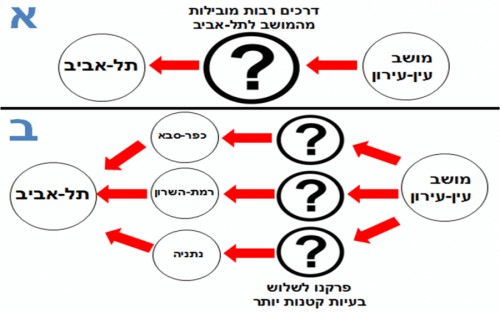Only a few research the field of power, which is important for improving energy utilization

I met with Yoash LeBron to ask him what they are doing there at the university.
Yoash lives with his wife and two children in Moshav Ein-Iron in the Pardes-Hana Karkur area. He began his studies in the field of electrical engineering as an assistant professor at the Technion. After that, for ten years, he worked in the army developing electrical circuits in a reputed unit. He is currently after finishing his doctoral thesis on the topic of power supply systems under the guidance of Dr. Doron Shmilovitz at the Faculty of Electrical Engineering at Tel Aviv University.
Yoash, so what are you doing there?
I am engaged in the research of power supply systems, which is a broad topic that includes energy production, energy transmission, the national electricity grid, generators, and the like. This is an area where something very strange has happened over the years. Despite the great importance of the topics, they are not popular today as research topics.
Did this mean that there would be few researchers in the field?
Yes. In fact, this field of research has been almost inactive in recent years.
sounds strange. can you explain
Yes, but to get a little background, let's take a brief historical background. From the 40s to the 70s, engineering faculties were based on research in supplier systems. For example, the Technion had about 15 faculty members who researched these issues. In the 70s and 80s, the digital revolution and the global communications revolution began simultaneously with the invention of the transistor. The fields of computing and information technologies began to develop rapidly and the fund of power systems research decreased prodigiously. In fact, the mindset is that these topics are purely engineering and no longer contain a research challenge.
So maybe they are right, and there is nothing to investigate?
On the contrary. Following the global green revolution, a huge demand for the field was born. Since there is a problem of depletion of global energy sources, everyone wants to develop energy conversion systems. This has in recent years flowed money for example for research scholarships, and naturally for a renewed increase in the level of interest in the field.
At the same time, a very talked about and important global project called 'smart grid' came up.
what's the matter?
First, it must be understood that the form of electricity supply that is used today is already a hundred years old! The electricity network consists of several centralized and huge power generation stations from which the electricity flows directly to consumers. But in a world striving to increase the use of renewable energy, for example solar energy, the situation is already different. The electricity grid should be ready to receive electricity from small and multiple producers, who have assembled a solar panel on the roof with the encouragement of the state.
The purpose of the smart grid project is to upgrade the electricity grid from a centralized grid to a grid that can be decentralized. This network should include sophisticated control systems that will effectively manage the show, like a conductor over an orchestra.
Also, there is a high willingness today in the world in general and in the USA in particular to invest money in projects or startups that deal in the field.

Why do we need all this control?
The first goal of a smart grid is to contribute to the stability of the system. It should be understood that today an electricity company knows at any given moment what the demand for electricity is and how much it needs to supply. But in the future network where a significant part of the electricity is produced by small and scattered suppliers, the control over the amount of electricity produced and supplied at any given moment is much lower. You cannot, for example, ask a person with a solar panel on the roof to produce less electricity for a period, because he loses money from it.
The second goal is the use and management of energy reserves. When using renewable energy, there is a need for electricity storage techniques because the production of electricity is not always possible, for example solar cells at night. Therefore it is necessary to manage them effectively.
Tell me what you've been working on.
In one of the projects I worked on, I showed how ideas can be drawn from data transmission network management and used successfully in electricity network management. This approach helped me develop an effective tool for analyzing huge power systems that contain thousands of electricity producers of various types and millions of consumers.
What is the problem you are trying to solve with the help of that calculation tool you developed?
The official name of the problem is the power flow problem, and it has been studied more or less since the 20s of the last century. The question is what are the electric current and voltage at each point in a certain electrical network. If I can calculate the solution to this problem I can route the amount of electricity needed from each producer in a more efficient way, given an existing electricity grid. Also, the ability to effectively solve the problem will also contribute to effective planning of the network. We will be able to more easily answer questions such as: will the construction of a new line between Yakneam and Tiberias benefit the network or not.
Today, the control of the grid is done by determining the output power from each of the large power plants at a given time. Because there are few production points, it is still relatively easy today to control the grid. But when the network will consist of a large number of consumers and small producers, controlling the stability of the network will be much more difficult. I want the possibility to effectively control a network with over 1000 generators and not just 5 like today.
Where is the difficulty in the solution?
The difficulty is to find an optimal solution for a huge number of equations and an astronomical number of variables.
אז מה עושים?
What I have shown is that instead of trying to solve the equations in full using standard methods, it is better to try to get smarter. As I mentioned before, my method is inspired by the solution of an information flow network and is based on an approach known as dynamic programming.
I will try to give an intuition to the method from another, slightly more familiar field. Suppose we want to calculate the shortest route between the small town of Ein-Iron and the big city of Tel-Aviv. There are countless ways so we cannot compare them all to find the shortest way. But if we assume that we know the distance between Kfar Saba, Ramat Hasharon and Netanya to Tel Aviv, all we have left is to solve what is the shortest way to reach each of these cities, then we can easily calculate which one is better to reach in order to continue to Tel Aviv. This way we can continue to break down the problem recursively into smaller and easier problems until we find the solution that is the shortest way.

And if we return to the power flow problem?
So, applying this way of thinking, I developed a calculation method that will always yield the optimal solution for any electricity network, and in a much shorter time than the conventional way.
Let's think of the power flowing in the lines like the cars driving on the road. The question is how to "route the traffic" in the most efficient way. How will we transfer the power between the power plant in Hadera and the consumer in Jerusalem? I claim that such a way of thinking allows for a more efficient solution of the network than an "aggressive" numerical search.
My hope is that this method will bring about a revolution in the field of solving supplier networks and advance it into the twenty-first century.
* * *
I would be happy to meet and talk with any research student (maybe you?) who is willing to participate and tell me a little about what he is doing (and all for the price of a not too long conversation). You can contact me via Contact Us Form.
It's time to tell everyone what you're doing, maybe this time they'll understand too
The article was published on Oren Shaya's blog.to a constant extent"

One response
Interesting, nice to see news about the field of work that is not in the spotlight.
In a little while, the engineers who arrived in the 90s and held the field will retire and there will be a serious crisis in the field.